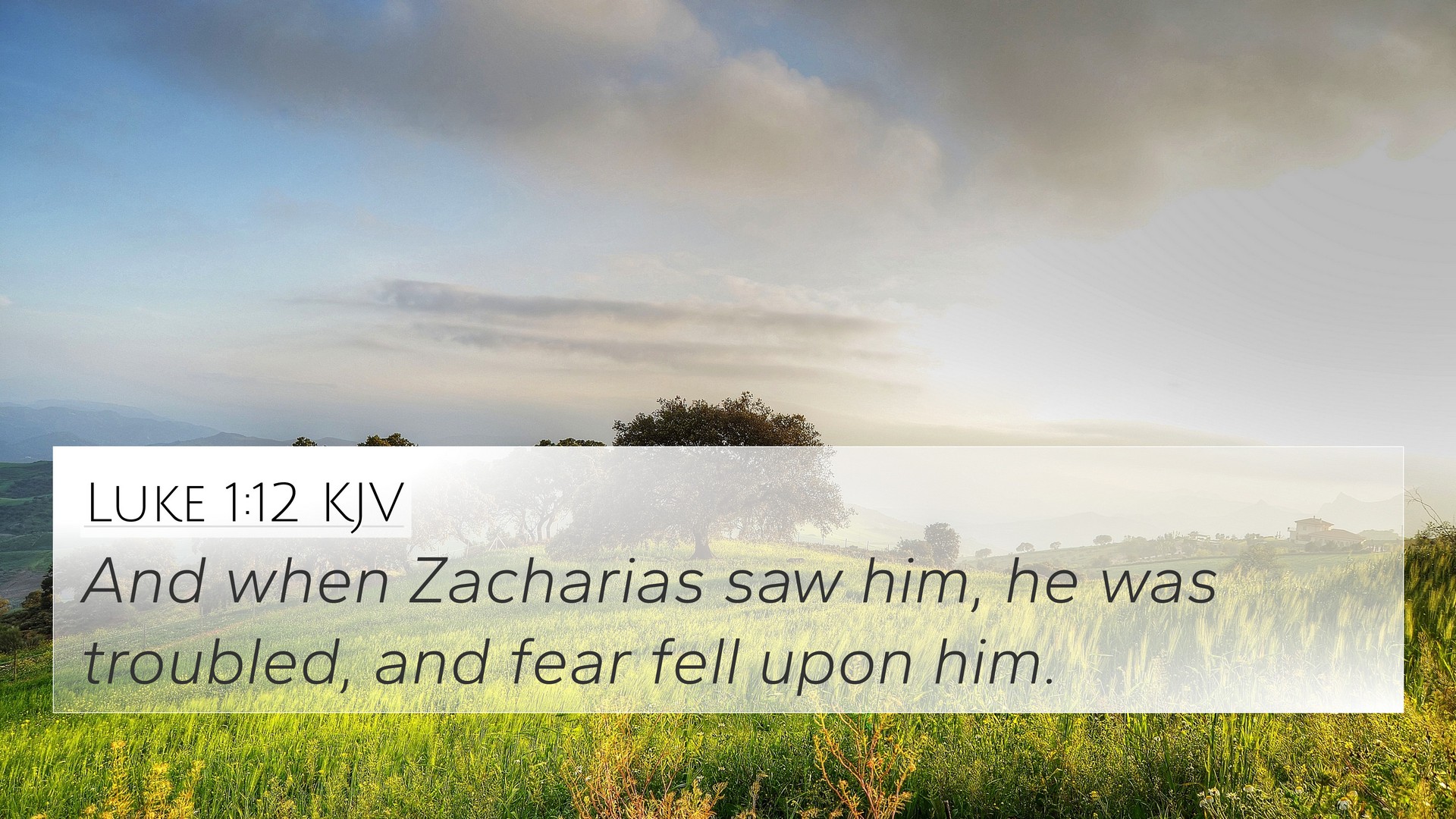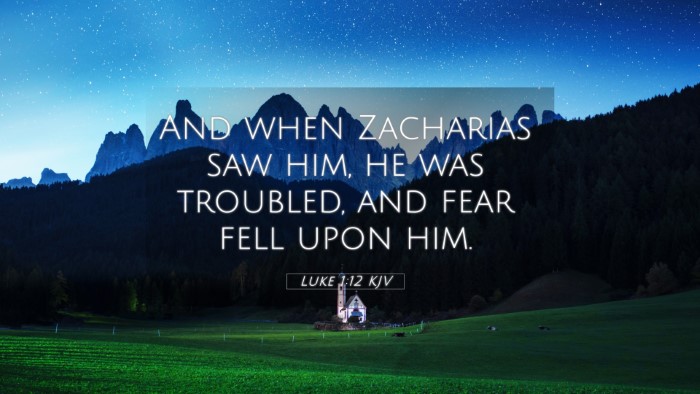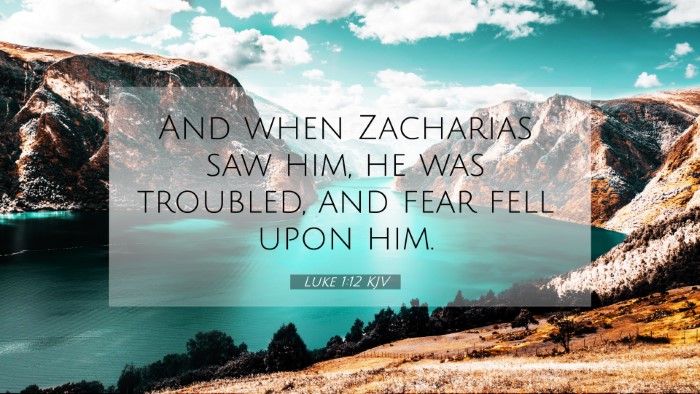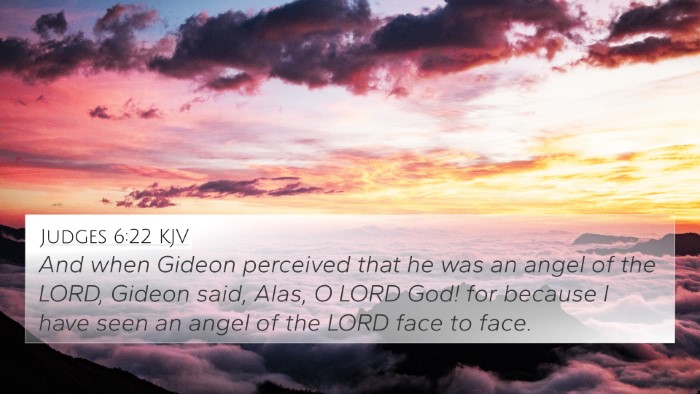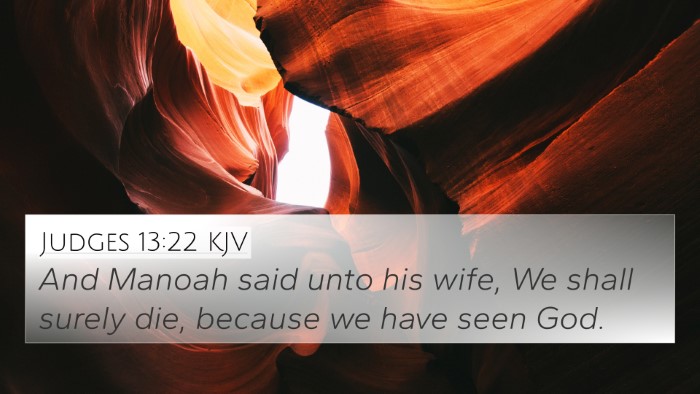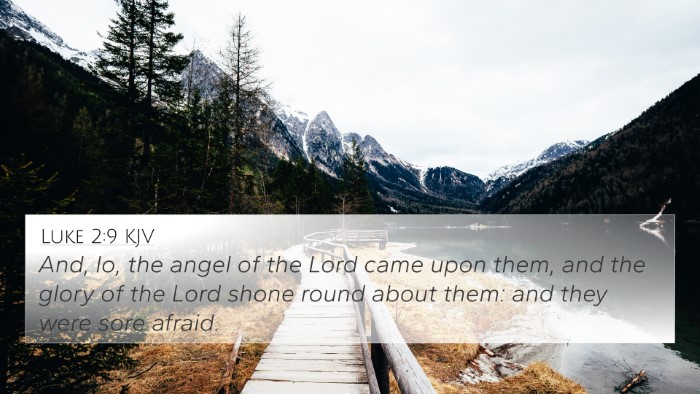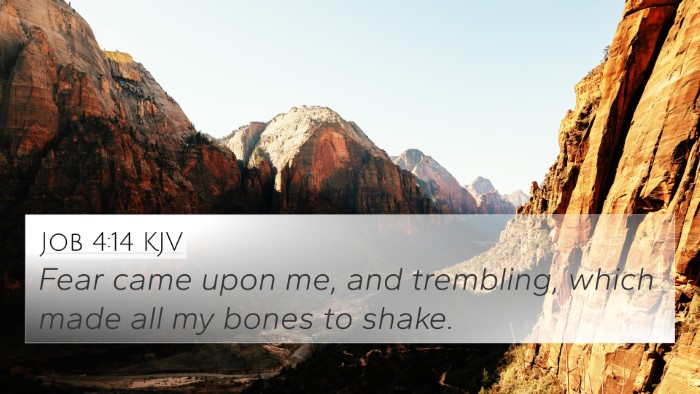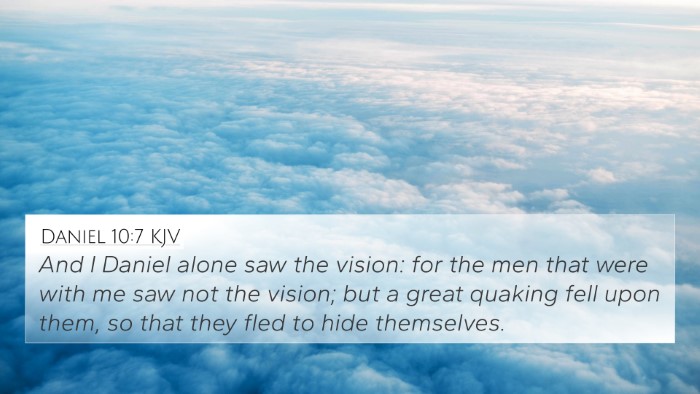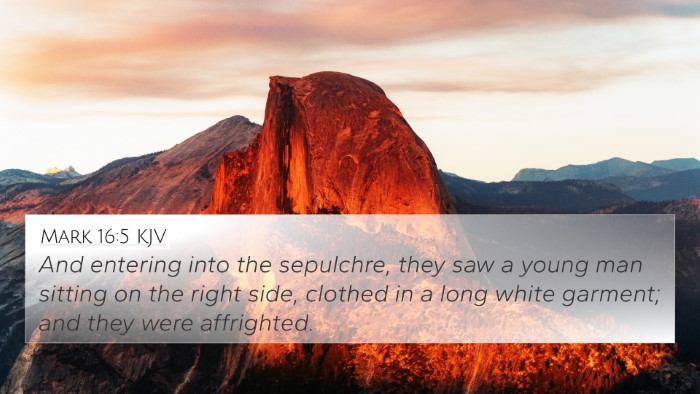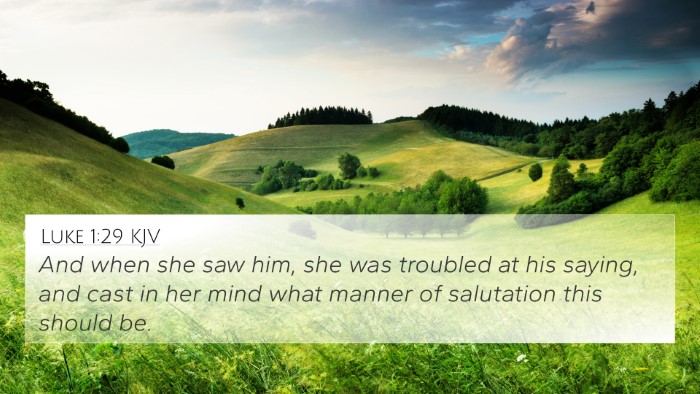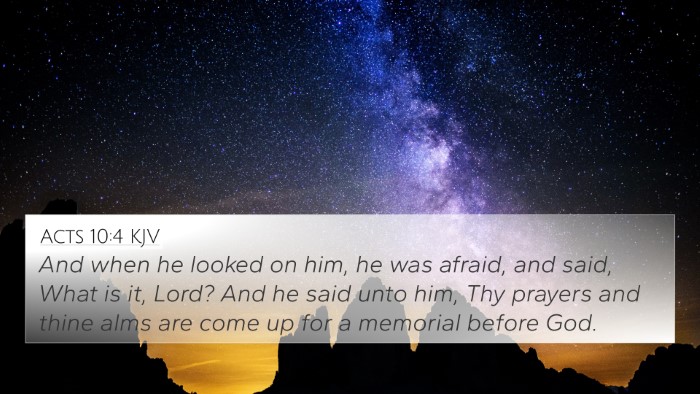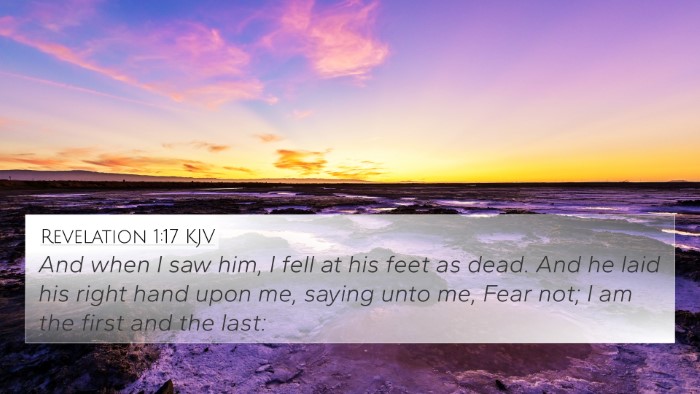Understanding Luke 1:12
Luke 1:12 states: "And when Zacharias saw him, he was troubled, and fear fell upon him." This verse is part of the narrative surrounding the announcement of the birth of John the Baptist, delivered by the angel Gabriel. To fully grasp its significance, we can explore various commentaries and make connections to other scriptures.
Context and Significance
In this moment, Zacharias, a priest, is performing his duty in the temple when he encounters the angel of the Lord. This divine interruption is pivotal because it signifies the beginning of God's intervention in human history through the coming of Christ and the precursor, John the Baptist.
Commentary Insights
-
Matthew Henry's Commentary:
Henry highlights the fear that overcame Zacharias upon seeing the angel, noting that this reaction is common in divine encounters throughout scripture. The holy presence of the angel demonstrates God's glory, which often leaves mortals in fear and awe. Henry emphasizes that such fear can lead to deeper reverence and acknowledgment of God's majesty.
-
Albert Barnes' Notes:
Barnes elaborates on the nature of Zacharias’ fear, explaining that it stemmed from the unexpectedness of the encounter and the overwhelming nature of seeing a heavenly being. He notes that angels often brought messages that changed the course of human events, increasing the weight of their presence.
-
Adam Clarke's Commentary:
Clarke remarks on the character of Zacharias, describing him as a devout man. His initial fear is contrasted against his faithful service to God, suggesting that the encounter must have been profoundly transformative and unsettling, even for a righteous man.
Bible Verse Cross-References
To further appreciate Luke 1:12, we can explore several Bible verse cross-references that connect to its themes of divine revelation, fear, and divine purpose:
- Isaiah 6:5: "Woe is me! For I am undone; because I am a man of unclean lips..." - This verse illustrates a similar reaction of fear upon encountering God’s holiness.
- Luke 1:30: "And the angel said to her, 'Do not be afraid, Mary...'" - Here, the angel reassures Mary, mirroring the divine comfort often needed in moments of fear.
- Matthew 28:4: "And the guards shook for fear of him, and became like dead men." - This illustrates the reaction of mortal beings in the presence of angels.
- Revelation 1:17: "And when I saw him, I fell at his feet as dead..." - John’s reaction is indicative of the fear associated with encountering the divine.
- Luke 2:9: "And behold, an angel of the Lord stood before them, and the glory of the Lord shone around them, and they were greatly afraid." - This passage resonates with the theme of fear in angelic appearances.
- Exodus 34:30: "So when Aaron and all the children of Israel saw Moses, behold, the skin of his face shone, and they were afraid to come near him." - The fear of the people in response to divine encounters further underlines this theme.
- John 20:19: "Then, the same day at evening, being the first day of the week, when the doors were shut where the disciples were assembled, for fear of the Jews..." - Here, fear impacts the disciples' actions, illustrating fear in divine contexts.
Thematic Bible Verse Connections
The apprehension exhibited by Zacharias establishes a thematic connection between Bible verses that relate to each other. The following themes can be observed:
- Divine Presence: The reaction of fear in the presence of God or His messengers recurs throughout scripture, signaling the weight of divine revelation.
- Divine Reassurance: As in many encounters with angels, a recurring theme is the need for reassurance, as seen when angels comfort Mary and the shepherds.
- The Call to Obedience: The fear felt by Zacharias transitions into obedience as he ultimately fulfills God’s plan for his son, John the Baptist, further connecting to the obedient responses of biblical characters in times of divine encounter.
A Comparative Bible Verse Analysis
When conducting a comparative analysis of scripture, it becomes apparent that the fear experienced by Zacharias is not isolated. This response to divine interaction invites reflection on broader biblical narratives where fear and faith coexist:
- Examine the interplay of fear and faith in the lives of figures like Moses and Isaiah, who also encountered God with trepidation.
- Explore how such encounters often preceded significant calls to action, as in the case of Zacharias' role in heralding the coming of Christ through John.
- Consider other instances in which fear leads to revelation, such as Paul’s conversion experience on the road to Damascus.
Tools for Bible Cross-Referencing
Engaging with the connections in scripture can be facilitated by utilizing various tools for Bible cross-referencing. Some recommended methods include:
- Bible Concordance: This helps in locating verses by keywords and themes.
- Bible Cross-Reference Guide: A guide that lays out related verses thematically.
-
- Cross-Reference Bible Study Methods: Structured approaches to explore connections between verses.
- Bible Reference Resources: Books and applications that focus on inter-Biblical dialogue through contextual referencing.
- Bible Chain References: A method of linking verses sequentially on a given theme or topic.
Conclusion
Luke 1:12 serves as a vital moment that encapsulates both the fear instilled by the presence of the divine and the anticipation of God's redemptive plan through John the Baptist. The fear Zacharias experiences is not only shared among biblical figures but also highlights a spiritual tension between fear and faith throughout scripture. Through careful study and cross-referencing Biblical texts, believers can gain deeper insight into their faith journey and the historical context of divine revelations.
